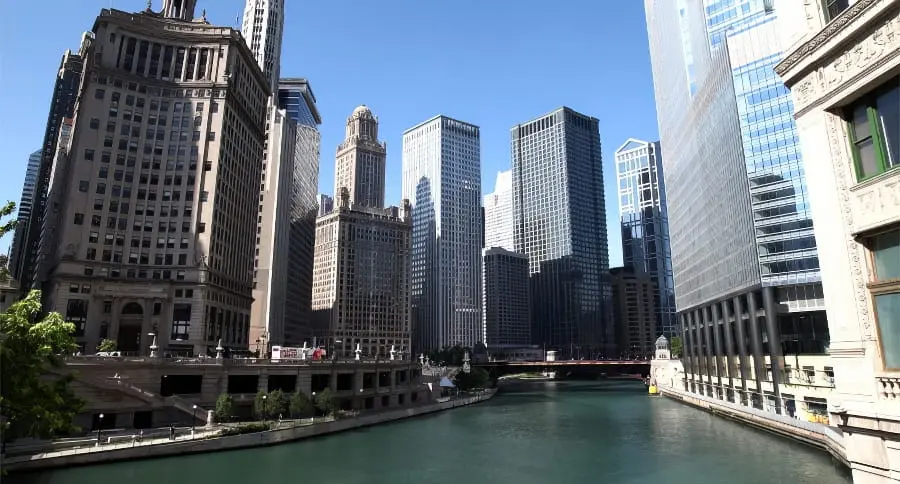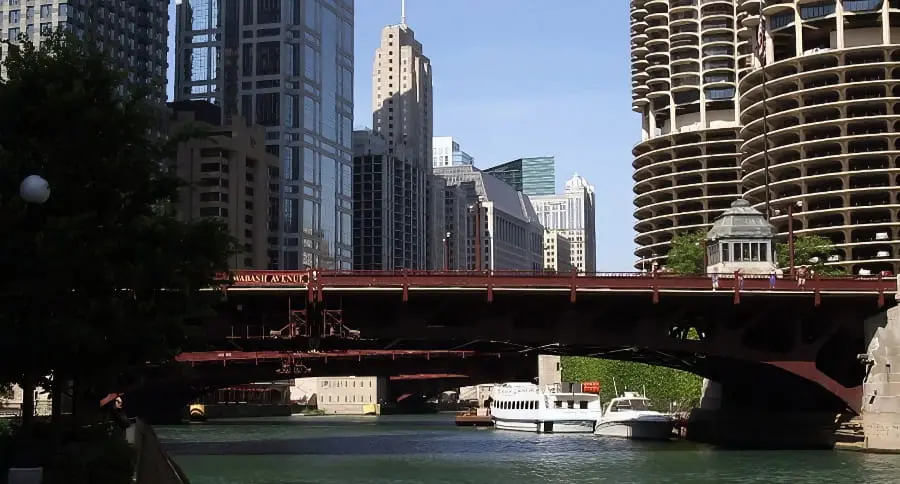Chicago River

The Chicago River stretches 156 miles from Lake Michigan to downtown Chicago before winding its way through rural Illinois to join the mighty Mississippi River to the southwest.
As crazy as it sounds, Chicago didn't hesitate to reverse the river's course in the 19th century for sanitary and, above all, economic reasons: by reversing the flow, the river would no longer flow into Lake Michigan, but into the gigantic Mississippi River, which was then a vital artery for the entire North American continent. The economic prospects for the city of Chicago were promising, and colossal works were undertaken. The inverted river quickly became a central link between the Great Lakes region and the Mississippi Valley. The costly idea paid off...
The Chicago River is spanned by a multitude of bridges of all styles and materials, or nearly all of them. There have been more than 52, of which 38 remain today. In the heart of downtown Chicago, there are about twenty bascule bridges whose decks separate and open to allow larger vessels to pass.

Some of the city's most iconic buildings are located along the banks of the Chicago River, including the Trump International Hotel and Tower, the Wrigley Building, the Civic Opera House and Union Station.
Several guided cruises offer themed discoveries on the water, most of which focus on the architectural features of the buildings along the river. (See "Guided Tours").
On the River Walk, restaurants, cafes and bars set up tables, chairs and umbrellas along the river from noon until late at night. Here you can sip cocktails and nibble on a variety of not-always-complex snacks, but it's mostly the decor that makes you stop, like at O'Brien's, with your feet in the water and your head in the skyscrapers.
Every year on St. Patrick's Day, a curious local custom turns the waters of the Chicago River green. A famous image that makes the rounds on TV news around the world. Not to be missed if you're lucky enough to be there around March 17. In a city with deep-rooted Irish traditions, the festivities are always wild.
